Volume 2, Issue 2
Displaying 1-13 of 13 articles from this issue
- |<
- <
- 1
- >
- >|
-
1992Volume 2Issue 2 Pages 85-96
Published: October 30, 1992
Released on J-STAGE: February 09, 2011
Download PDF (4529K) -
1992Volume 2Issue 2 Pages 97-116
Published: October 30, 1992
Released on J-STAGE: February 09, 2011
Download PDF (2819K) -
1992Volume 2Issue 2 Pages 117-124
Published: October 30, 1992
Released on J-STAGE: February 09, 2011
Download PDF (8380K) -
1992Volume 2Issue 2 Pages 125-131
Published: October 30, 1992
Released on J-STAGE: February 09, 2011
Download PDF (886K) -
1992Volume 2Issue 2 Pages 132-138
Published: October 30, 1992
Released on J-STAGE: February 09, 2011
Download PDF (3611K) -
1992Volume 2Issue 2 Pages 139-149
Published: October 30, 1992
Released on J-STAGE: February 09, 2011
Download PDF (9234K) -
1992Volume 2Issue 2 Pages 150-157
Published: October 30, 1992
Released on J-STAGE: February 09, 2011
Download PDF (8006K) -
1992Volume 2Issue 2 Pages 159-161
Published: October 30, 1992
Released on J-STAGE: February 09, 2011
Download PDF (382K) -
1992Volume 2Issue 2 Pages 162-173
Published: October 30, 1992
Released on J-STAGE: February 09, 2011
Download PDF (1867K) -
1992Volume 2Issue 2 Pages 173-176
Published: October 30, 1992
Released on J-STAGE: February 09, 2011
Download PDF (625K) -
1992Volume 2Issue 2 Pages 176-197
Published: October 30, 1992
Released on J-STAGE: February 09, 2011
Download PDF (3428K) -
1992Volume 2Issue 2 Pages 197-213
Published: October 30, 1992
Released on J-STAGE: February 09, 2011
Download PDF (2651K) -
1992Volume 2Issue 2 Pages 214-230
Published: October 30, 1992
Released on J-STAGE: February 09, 2011
Download PDF (2603K)
- |<
- <
- 1
- >
- >|
